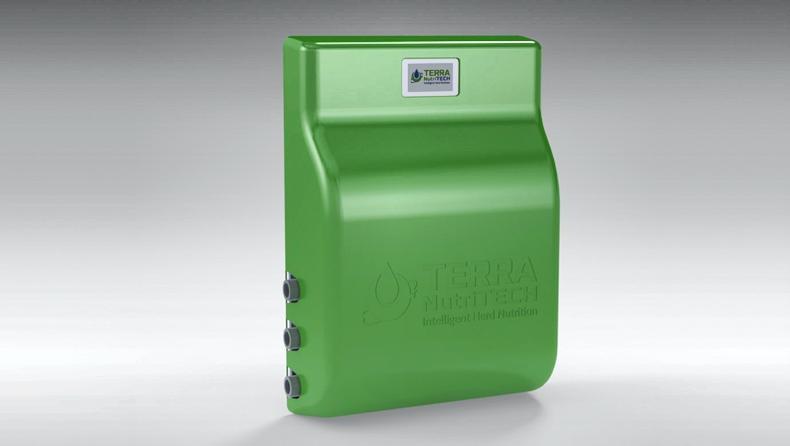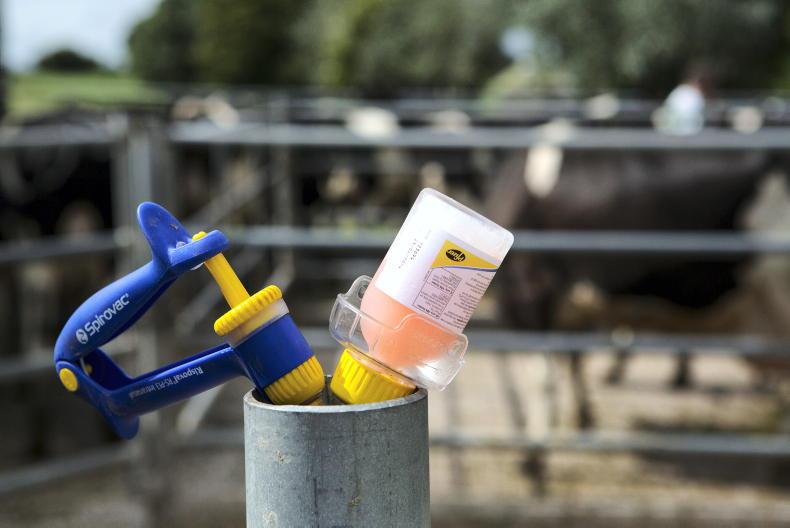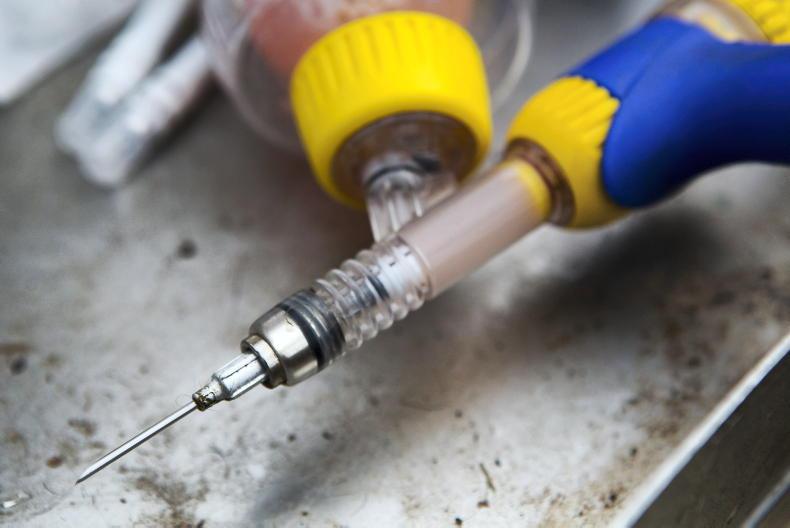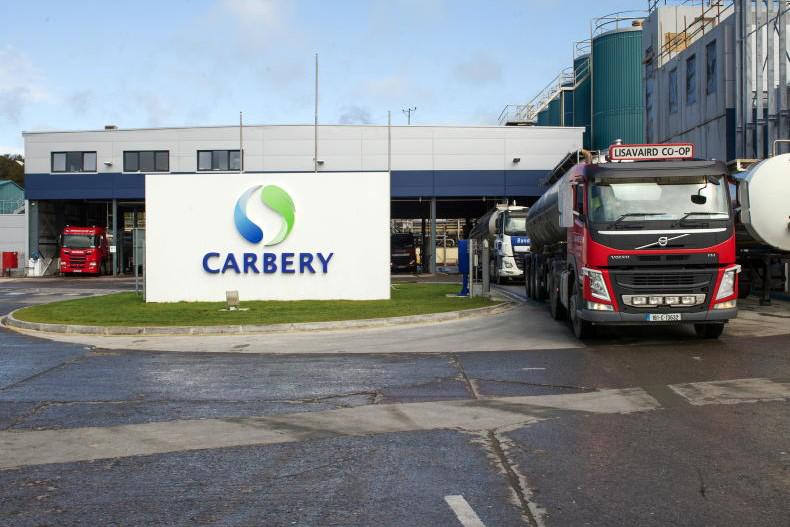Energy and protein are the nutritional building blocks in winter diets. It is important to look at the productive needs and then balance intakes based on this. Minerals are the next most important thing when assessing winter feed. Again, there are lot of minerals – both macro and micro – that animals need to have in their diets at varying levels.
We must balance these and avoid deficiencies but also be cognisant that animals’ mineral intake is not too high to avoid the risk of toxicity.
Macro minerals
Animals require more macro minerals than micro minerals.
Sodium: salt is a simple mineral that is so important for animal health and it can be low in some forages. A simple tip is put out cheap salt blocks this winter. Cattle and sheep will only consume it if they need it. You should have plenty fresh water available at all times for stock. Calcium: this is the most abundant mineral. Silage contains high levels of calcium, but grains have lower levels. Both cows and sheep require low levels of calcium in forages fed before lambing and calving. After lactating, ruminants require increased amounts of calcium. Magnesium: low magnesium intake can affect calcium absorption and resorption, increasing the risk of milk fever. Also, very low magnesium can increase the risk of grass tetany. Potassium: this is high in most forages in Ireland due to slurry application. It can lock up magnesium and calcium, increasing the risk of milk fever indoors. Phosphorus: this mineral is required for skeletal development and muscle building. It is used for normal milk secretion in suckler cows. When levels are very low, it can lead to PICA in cattle, where they seek out and eat stones and other rubbish around the yard. 
Oral drenches can vary in quality.
Micro minerals and trace elements
These minerals are required in smaller amounts but are also critical.
Iodine is very important in the formation of thyroxine which controls metabolism. When it is low, it can affect newborn calves’ and lambs’ immunity and if the deficiency is severe it can lead to increased numbers of stillbirths.Selenium plays an important role with vitamin E in immune function. When it is very low you can see white muscle disease. It can be implicated in problems such as increases in uterine infections after calving.Copper is an essential mineral for enzymes and body function. It is often locked up when we have high molybdenum in soil or high sulphur in water. We can also oversupply it to sheep causing toxicity. Livers provide the best way of finding out whether copper is an issue on your farm. High molybdenum is common in some parts of Ireland and acts by locking up copper and causing ill thrift in young stock.Zinc is important for immune function and is often linked to healthy hooves.Cobalt is important for growing lambs and growing calves. All ruminants require cobalt and vitamin B12. Where deficiency occurs, growth and performance may be affected. 
Minerals need to be farm-specific.
Finding out your farm status
Farmers spend a fortune on minerals and while minerals can cause problems, we need to start putting some science behind our supplementation. Balancing this equation is key to avoid having too little of something or too much. Farmers need to find out what the mineral status of their farms is. This can be done and yes it may have an initial cost but will allow more strategic supplementation over time, leading to better production and animal performance.
Investigating your mineral status
Soil tests can be very valuable as different soil types will impact minerals. This can again be farm- or area-specific. How we manage soil on our farms also has a big impact on the availability of minerals. Soil tests cost €45 to €65.
Grass samples can be taken from different fields and even different rotations. We can freeze samples and then send all the samples together. We need a scissors and make sure we don’t get any soil contamination of grass samples. Key times are around May, June and September. Grass sample minerals cost €60 to €80.
Forage mineral analysis is also very useful as this is the key feed for the winter months. For spring calving or lambing knowing what’s in the feed is crucial in the weeks leading up to birth. Silage mineral analysis costs €60 to €80.
Bloods can be taken from a proportion of animals and checked for cobalt (b12), selenium and iodine.
Finally where copper is a concern, liver samples taken from abattoirs can help us build a better understanding of the risk.
These tests can allow farmers build a profile and understand what minerals they might need. This allows for much more targeted treatments and puts the science into supplementation.
Options
There are a number of ways of giving minerals but all have positives and negatives, as shown in Table 1.
The most expensive mineral is not always the one that will work.Spend time making the right decision around the supplement and the way in which you are giving it.Anyone selling a mineral should show you studies backing up claims made.The price of boluses can be an indicator of quality.Never use minerals to solve a problem unless you know they are the problem.All animals can respond to some mineral supplementation and late pregnancy, calving and lambing time are key target areas. Breeding time for cattle and sheep also benefits from mineral supplementation.
Energy and protein are the nutritional building blocks in winter diets. It is important to look at the productive needs and then balance intakes based on this. Minerals are the next most important thing when assessing winter feed. Again, there are lot of minerals – both macro and micro – that animals need to have in their diets at varying levels.
We must balance these and avoid deficiencies but also be cognisant that animals’ mineral intake is not too high to avoid the risk of toxicity.
Macro minerals
Animals require more macro minerals than micro minerals.
Sodium: salt is a simple mineral that is so important for animal health and it can be low in some forages. A simple tip is put out cheap salt blocks this winter. Cattle and sheep will only consume it if they need it. You should have plenty fresh water available at all times for stock. Calcium: this is the most abundant mineral. Silage contains high levels of calcium, but grains have lower levels. Both cows and sheep require low levels of calcium in forages fed before lambing and calving. After lactating, ruminants require increased amounts of calcium. Magnesium: low magnesium intake can affect calcium absorption and resorption, increasing the risk of milk fever. Also, very low magnesium can increase the risk of grass tetany. Potassium: this is high in most forages in Ireland due to slurry application. It can lock up magnesium and calcium, increasing the risk of milk fever indoors. Phosphorus: this mineral is required for skeletal development and muscle building. It is used for normal milk secretion in suckler cows. When levels are very low, it can lead to PICA in cattle, where they seek out and eat stones and other rubbish around the yard. 
Oral drenches can vary in quality.
Micro minerals and trace elements
These minerals are required in smaller amounts but are also critical.
Iodine is very important in the formation of thyroxine which controls metabolism. When it is low, it can affect newborn calves’ and lambs’ immunity and if the deficiency is severe it can lead to increased numbers of stillbirths.Selenium plays an important role with vitamin E in immune function. When it is very low you can see white muscle disease. It can be implicated in problems such as increases in uterine infections after calving.Copper is an essential mineral for enzymes and body function. It is often locked up when we have high molybdenum in soil or high sulphur in water. We can also oversupply it to sheep causing toxicity. Livers provide the best way of finding out whether copper is an issue on your farm. High molybdenum is common in some parts of Ireland and acts by locking up copper and causing ill thrift in young stock.Zinc is important for immune function and is often linked to healthy hooves.Cobalt is important for growing lambs and growing calves. All ruminants require cobalt and vitamin B12. Where deficiency occurs, growth and performance may be affected. 
Minerals need to be farm-specific.
Finding out your farm status
Farmers spend a fortune on minerals and while minerals can cause problems, we need to start putting some science behind our supplementation. Balancing this equation is key to avoid having too little of something or too much. Farmers need to find out what the mineral status of their farms is. This can be done and yes it may have an initial cost but will allow more strategic supplementation over time, leading to better production and animal performance.
Investigating your mineral status
Soil tests can be very valuable as different soil types will impact minerals. This can again be farm- or area-specific. How we manage soil on our farms also has a big impact on the availability of minerals. Soil tests cost €45 to €65.
Grass samples can be taken from different fields and even different rotations. We can freeze samples and then send all the samples together. We need a scissors and make sure we don’t get any soil contamination of grass samples. Key times are around May, June and September. Grass sample minerals cost €60 to €80.
Forage mineral analysis is also very useful as this is the key feed for the winter months. For spring calving or lambing knowing what’s in the feed is crucial in the weeks leading up to birth. Silage mineral analysis costs €60 to €80.
Bloods can be taken from a proportion of animals and checked for cobalt (b12), selenium and iodine.
Finally where copper is a concern, liver samples taken from abattoirs can help us build a better understanding of the risk.
These tests can allow farmers build a profile and understand what minerals they might need. This allows for much more targeted treatments and puts the science into supplementation.
Options
There are a number of ways of giving minerals but all have positives and negatives, as shown in Table 1.
The most expensive mineral is not always the one that will work.Spend time making the right decision around the supplement and the way in which you are giving it.Anyone selling a mineral should show you studies backing up claims made.The price of boluses can be an indicator of quality.Never use minerals to solve a problem unless you know they are the problem.All animals can respond to some mineral supplementation and late pregnancy, calving and lambing time are key target areas. Breeding time for cattle and sheep also benefits from mineral supplementation. 










SHARING OPTIONS